
Charles Marion Russell Painting Reproductions 1 of 2
1864-1926
American Realist Painter
Charles Marion Russell (1864, Oak Hill, Missouri - 1926, Great Falls, Montana), also known as C.M. Russell, was one of the great artists of the American West. Russell created more than 2,000 paintings of cowboys, Indians, and landscapes set in the Western United States, in addition to bronze sculptures. His mural entitled Lewis and Clark Meeting the Flathead Indians hangs in the state capitol building in Helena, Montana. His 1918 painting Piegans sold for $5.6 million dollars at a 2005 auction.
Childhood
Art was always a part of Charles' life. Growing up in Missouri, he drew sketches and made clay figures of animals. He had an intense interest in the wild west and would spend hours reading about it. He would watch explorers and fur traders who frequently came through Missouri. Russell learned to ride horses at Hazel Dell Farm in Jerseyville, Illinois on a famous Civil War horse called "Great Britain." His instructor was Col. William H. Fulkerson who had married into the Russell family. At the age of sixteen, he left school and went to Montana to work on a sheep ranch.
Discovery
In 1882, by the age of eighteen, Russell was working as a cattle hand. The harsh winter of 1886 and 1887 provided the inspiration for a painting that would give Charles his first taste of publicity. According to stories, he was working on the O-H Ranch in the Judith Basin of Central Montana when the ranch foreman received a letter from the owner, asking how the cattle herd had weathered the winter. Instead of a letter, the ranch foreman sent a postcard-sized watercolor Charles had painted of gaunt steer being watched by wolves under a gray winter sky. The ranch owner showed the postcard to friends and business acquaintances and eventually displayed it in a shop window in Helena, Montana. After this, work began to come steadily to the artist. Russell's caption on the sketch, "Waiting for a Chinook," became the title of the drawing, and Russell later created a more detailed version which is one of his best-known works.
Adulthood
In 1896, he married his wife Nancy. In 1897, they moved from the small community of Cascade, Montana to neighboring Great Falls, where Russell spent the majority of his life from that point on. There, he continued with his art, becoming a local celebrity and gaining the acclaim of critics worldwide. As he kept primarily to himself, Nancy is generally given credit in making Russell an internationally known artist. She set up many shows for him throughout the United States and in London, creating many followers of Russell's work.
On the day of Russell's funeral in 1926, all the children in Great Falls were released from school to watch the funeral procession. Russell's coffin was displayed in a glass sided coach, pulled by four black horses.
Tributes
In 1965, a high school was built on the north side of the Missouri River and named C.M. Russell High School, in honor of Russell and his legacy.
In 1991, C.M. Russell was inducted into the St. Louis Walk of Fame.
Some of Russell's paintings were shown during the credits of the television series How the West Was Won.
Along with Jeannette Rankin, the first female member of Congress, Charles M. Russell represents Montana in the National Statuary Hall Collection in the United States Capitol.
Charles Marion Russell was known as all of these titles and several others, including friend to many. His life can be chronicled through a series of dates and simple facts:
Born March 19, 1864
Went west for the first time March 1880
Married to Miss Nancy Cooper September 9, 1896
Built his famous log art studio in 1903 akin to his house in Great Falls, Montana
Adopted a son in 1916
Published story collections, Rawhide Rawlins Stories (1921), More Rawhides (1925), and Trails Plowed Under (1927)
Died of heart attack October 24, 1926
These dates, while factual, do not tell much of his story though. They skim the surface of a man who many called and still call to this day, the ‘Greatest Painter of the Old West’.
From an early age, he disliked school immensely. This is documented by the fact that at the age of 15, he was shipped off to military school in Burlington, New Jersey. He lasted only one semester and was asked not to return. Art school his parents thought would be ideal. He lasted only days. He had no time for any of this. His interests were cowboys, Indians, and going west. He wanted to go west more than anything. For his sixteenth birthday, he received his greatest desire.
Believing that a stay in the ‘real world’ would shake the foolishness out of him, his parents allowed him to go west to Montana Territory with a family friend, Pike Miller. This was a mistake. He did not enjoy working for Mr. Miller, and was lax in his duties as sheep herder, being more interested in painting than shepherding. He soon parted company with Mr. Miller, but having tasted freedom, did not head home. During the ensuing two years, he worked for a mountain man who provided food and furs to local ranches.
After this period, he returned home to Missouri for a brief visit, then headed out west again. In the next eleven years, he achieved one of his early dreams. He worked as a 'real' cowboy. During this time he would paint and draw nearly every day. He became known as a lover of all things living. He hunted, but did not believe in killing just for the sake of a kill. He was a true gentleman.
He also had a respect for the Indian beyond what many of his day would have approved. He believed in their plight and displayed this in many ways. Before long, he was known throughout the Montana territory as a very talented western artist. Some said they had never seen better. When Charlie was 24, in the year 1888, he had the opportunity to meet and spend time among several Indian tribes. His respect for them was immediate. He would gather knowledge during this time that would show in his work for years to come.
Sometime early in his career, he started adding a buffalo skull as his '‘mark'. He would work it into the foreground and later copyrighted it as his logo. Some say this was his silent show of respect to his Indian friends representing the loss of their life, the great buffalo.
His wife Nancy was able to encourage him to take his art as a serious career, rather than merely an enjoyable hobby. She recognized his talent, and took over the business end of his painting. With Nancy promoting his work, he soon was able to make a career of painting.
Within a year of their marriage, they moved to Great Falls. More people resided there, hence there would be more people to buy his paintings. Yet throughout his lifetime, his greatest gift may not have been his artwork, but his friendship. If Charlie deemed to call you friend, you knew in return that you would have a friend for life. He took to sending ‘letters’ to friends that were works of art themselves. The writing of the letters, colorful in prose, were also accompanied by drawings both on the letter itself but often the envelopes. It must have been a delight for not only the letter receiver, but also the letter carrier to deliver these works of art.
Many artists have come and gone, and many have been called ‘western artists’, but until you have viewed samples of his work, such as the famed 1886 painting “Waiting for a Chinook†depicting an emaciated cow waiting in snow for a wolf pack to finish her off, wait to make your judgement.
Childhood
Art was always a part of Charles' life. Growing up in Missouri, he drew sketches and made clay figures of animals. He had an intense interest in the wild west and would spend hours reading about it. He would watch explorers and fur traders who frequently came through Missouri. Russell learned to ride horses at Hazel Dell Farm in Jerseyville, Illinois on a famous Civil War horse called "Great Britain." His instructor was Col. William H. Fulkerson who had married into the Russell family. At the age of sixteen, he left school and went to Montana to work on a sheep ranch.
Discovery
In 1882, by the age of eighteen, Russell was working as a cattle hand. The harsh winter of 1886 and 1887 provided the inspiration for a painting that would give Charles his first taste of publicity. According to stories, he was working on the O-H Ranch in the Judith Basin of Central Montana when the ranch foreman received a letter from the owner, asking how the cattle herd had weathered the winter. Instead of a letter, the ranch foreman sent a postcard-sized watercolor Charles had painted of gaunt steer being watched by wolves under a gray winter sky. The ranch owner showed the postcard to friends and business acquaintances and eventually displayed it in a shop window in Helena, Montana. After this, work began to come steadily to the artist. Russell's caption on the sketch, "Waiting for a Chinook," became the title of the drawing, and Russell later created a more detailed version which is one of his best-known works.
Adulthood
In 1896, he married his wife Nancy. In 1897, they moved from the small community of Cascade, Montana to neighboring Great Falls, where Russell spent the majority of his life from that point on. There, he continued with his art, becoming a local celebrity and gaining the acclaim of critics worldwide. As he kept primarily to himself, Nancy is generally given credit in making Russell an internationally known artist. She set up many shows for him throughout the United States and in London, creating many followers of Russell's work.
On the day of Russell's funeral in 1926, all the children in Great Falls were released from school to watch the funeral procession. Russell's coffin was displayed in a glass sided coach, pulled by four black horses.
Tributes
In 1965, a high school was built on the north side of the Missouri River and named C.M. Russell High School, in honor of Russell and his legacy.
In 1991, C.M. Russell was inducted into the St. Louis Walk of Fame.
Some of Russell's paintings were shown during the credits of the television series How the West Was Won.
Along with Jeannette Rankin, the first female member of Congress, Charles M. Russell represents Montana in the National Statuary Hall Collection in the United States Capitol.
Charles Marion Russell was known as all of these titles and several others, including friend to many. His life can be chronicled through a series of dates and simple facts:
Born March 19, 1864
Went west for the first time March 1880
Married to Miss Nancy Cooper September 9, 1896
Built his famous log art studio in 1903 akin to his house in Great Falls, Montana
Adopted a son in 1916
Published story collections, Rawhide Rawlins Stories (1921), More Rawhides (1925), and Trails Plowed Under (1927)
Died of heart attack October 24, 1926
These dates, while factual, do not tell much of his story though. They skim the surface of a man who many called and still call to this day, the ‘Greatest Painter of the Old West’.
From an early age, he disliked school immensely. This is documented by the fact that at the age of 15, he was shipped off to military school in Burlington, New Jersey. He lasted only one semester and was asked not to return. Art school his parents thought would be ideal. He lasted only days. He had no time for any of this. His interests were cowboys, Indians, and going west. He wanted to go west more than anything. For his sixteenth birthday, he received his greatest desire.
Believing that a stay in the ‘real world’ would shake the foolishness out of him, his parents allowed him to go west to Montana Territory with a family friend, Pike Miller. This was a mistake. He did not enjoy working for Mr. Miller, and was lax in his duties as sheep herder, being more interested in painting than shepherding. He soon parted company with Mr. Miller, but having tasted freedom, did not head home. During the ensuing two years, he worked for a mountain man who provided food and furs to local ranches.
After this period, he returned home to Missouri for a brief visit, then headed out west again. In the next eleven years, he achieved one of his early dreams. He worked as a 'real' cowboy. During this time he would paint and draw nearly every day. He became known as a lover of all things living. He hunted, but did not believe in killing just for the sake of a kill. He was a true gentleman.
He also had a respect for the Indian beyond what many of his day would have approved. He believed in their plight and displayed this in many ways. Before long, he was known throughout the Montana territory as a very talented western artist. Some said they had never seen better. When Charlie was 24, in the year 1888, he had the opportunity to meet and spend time among several Indian tribes. His respect for them was immediate. He would gather knowledge during this time that would show in his work for years to come.
Sometime early in his career, he started adding a buffalo skull as his '‘mark'. He would work it into the foreground and later copyrighted it as his logo. Some say this was his silent show of respect to his Indian friends representing the loss of their life, the great buffalo.
His wife Nancy was able to encourage him to take his art as a serious career, rather than merely an enjoyable hobby. She recognized his talent, and took over the business end of his painting. With Nancy promoting his work, he soon was able to make a career of painting.
Within a year of their marriage, they moved to Great Falls. More people resided there, hence there would be more people to buy his paintings. Yet throughout his lifetime, his greatest gift may not have been his artwork, but his friendship. If Charlie deemed to call you friend, you knew in return that you would have a friend for life. He took to sending ‘letters’ to friends that were works of art themselves. The writing of the letters, colorful in prose, were also accompanied by drawings both on the letter itself but often the envelopes. It must have been a delight for not only the letter receiver, but also the letter carrier to deliver these works of art.
Many artists have come and gone, and many have been called ‘western artists’, but until you have viewed samples of his work, such as the famed 1886 painting “Waiting for a Chinook†depicting an emaciated cow waiting in snow for a wolf pack to finish her off, wait to make your judgement.
39 Charles Marion Russell Paintings
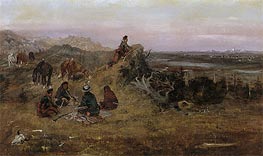
The Piegans Preparing to Steal Horses from the Crows 1888
Oil Painting
$1409
$1409
Canvas Print
$49.98
$49.98
SKU: RCM-5711
Charles Marion Russell
Original Size: 57.2 x 94 cm
Thyssen-Bornemisza Museum, Madrid, Spain
Charles Marion Russell
Original Size: 57.2 x 94 cm
Thyssen-Bornemisza Museum, Madrid, Spain
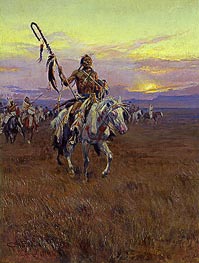
Medicine Man 1916
Oil Painting
$870
$870
Canvas Print
$57.29
$57.29
SKU: RCM-16421
Charles Marion Russell
Original Size: 69.8 x 57.2 cm
Public Collection
Charles Marion Russell
Original Size: 69.8 x 57.2 cm
Public Collection

The Slick Ear 1914
Oil Painting
$1122
$1122
Canvas Print
$68.58
$68.58
SKU: RCM-16422
Charles Marion Russell
Original Size: 97.2 x 104.8 cm
Public Collection
Charles Marion Russell
Original Size: 97.2 x 104.8 cm
Public Collection
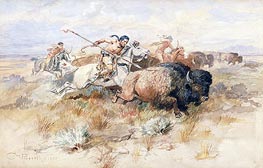
A Kiowa's Odyssey: The Buffalo Hunt 1877
Paper Art Print
$47.70
$47.70
SKU: RCM-16423
Charles Marion Russell
Original Size: 47 x 72.4 cm
Minneapolis Institute of Arts, Minnesota, USA
Charles Marion Russell
Original Size: 47 x 72.4 cm
Minneapolis Institute of Arts, Minnesota, USA
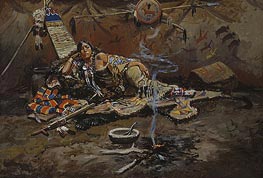
Waiting and Mad 1899
Oil Painting
$734
$734
Canvas Print
$49.98
$49.98
SKU: RCM-16424
Charles Marion Russell
Original Size: 30.4 x 45 cm
Indianapolis Museum of Art, Indiana, USA
Charles Marion Russell
Original Size: 30.4 x 45 cm
Indianapolis Museum of Art, Indiana, USA
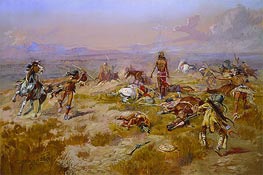
The Death Song of Lone Wolf 1901
Oil Painting
$1066
$1066
Canvas Print
$50.27
$50.27
SKU: RCM-16425
Charles Marion Russell
Original Size: 59.7 x 92.7 cm
Minneapolis Institute of Arts, Minnesota, USA
Charles Marion Russell
Original Size: 59.7 x 92.7 cm
Minneapolis Institute of Arts, Minnesota, USA
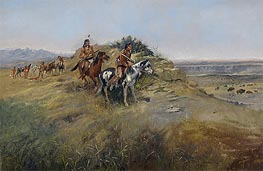
Buffalo Hunt 1891
Oil Painting
$1059
$1059
Canvas Print
$49.98
$49.98
SKU: RCM-16426
Charles Marion Russell
Original Size: 81.3 x 111.8 cm
Minneapolis Institute of Arts, Minnesota, USA
Charles Marion Russell
Original Size: 81.3 x 111.8 cm
Minneapolis Institute of Arts, Minnesota, USA
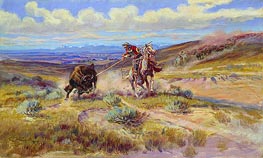
Spearing a Buffalo 1925
Oil Painting
$896
$896
Canvas Print
$49.98
$49.98
SKU: RCM-16427
Charles Marion Russell
Original Size: 44.4 x 74.6 cm
Minneapolis Institute of Arts, Minnesota, USA
Charles Marion Russell
Original Size: 44.4 x 74.6 cm
Minneapolis Institute of Arts, Minnesota, USA
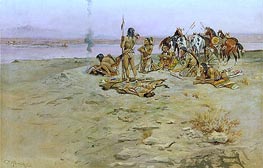
The Signal Fire 1897
Oil Painting
$1055
$1055
Canvas Print
$49.98
$49.98
SKU: RCM-16428
Charles Marion Russell
Original Size: 61 x 91.5 cm
Minneapolis Institute of Arts, Minnesota, USA
Charles Marion Russell
Original Size: 61 x 91.5 cm
Minneapolis Institute of Arts, Minnesota, USA
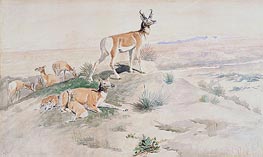
Antelope 1894
Paper Art Print
$47.70
$47.70
SKU: RCM-16429
Charles Marion Russell
Original Size: 49.2 x 83 cm
Minneapolis Institute of Arts, Minnesota, USA
Charles Marion Russell
Original Size: 49.2 x 83 cm
Minneapolis Institute of Arts, Minnesota, USA

Cowboys Roping a Steer 1904
Paper Art Print
$47.70
$47.70
SKU: RCM-16430
Charles Marion Russell
Original Size: 51.4 x 38 cm
Minneapolis Institute of Arts, Minnesota, USA
Charles Marion Russell
Original Size: 51.4 x 38 cm
Minneapolis Institute of Arts, Minnesota, USA
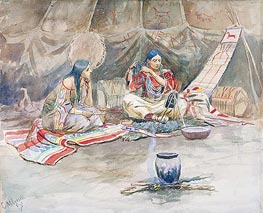
Two Indian Maidens c.1900/10
Paper Art Print
$52.44
$52.44
SKU: RCM-16431
Charles Marion Russell
Original Size: 43.2 x 50.8 cm
Minneapolis Institute of Arts, Minnesota, USA
Charles Marion Russell
Original Size: 43.2 x 50.8 cm
Minneapolis Institute of Arts, Minnesota, USA
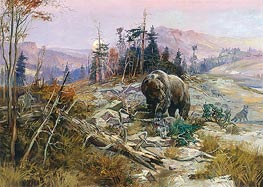
To The Victor Belongs The Spoils 1901
Oil Painting
$1180
$1180
Canvas Print
$49.98
$49.98
SKU: RCM-16432
Charles Marion Russell
Original Size: 80 x 113 cm
Public Collection
Charles Marion Russell
Original Size: 80 x 113 cm
Public Collection
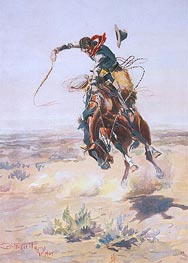
A Bad Hoss 1904
Paper Art Print
$47.70
$47.70
SKU: RCM-16433
Charles Marion Russell
Original Size: unknown
Library of Congress, Washington, USA
Charles Marion Russell
Original Size: unknown
Library of Congress, Washington, USA

The Custer Fight c.1903/05
Oil Painting
$1583
$1583
Paper Art Print
$47.70
$47.70
SKU: RCM-16434
Charles Marion Russell
Original Size: unknown
Library of Congress, Washington, USA
Charles Marion Russell
Original Size: unknown
Library of Congress, Washington, USA
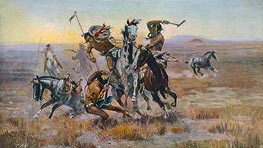
When Sioux and Blackfeet Met 1902
Oil Painting
$1119
$1119
Canvas Print
$49.98
$49.98
SKU: RCM-16435
Charles Marion Russell
Original Size: unknown
Library of Congress, Washington, USA
Charles Marion Russell
Original Size: unknown
Library of Congress, Washington, USA
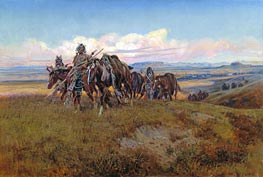
In the Enemy's Country 1921
Oil Painting
$1055
$1055
Canvas Print
$50.40
$50.40
SKU: RCM-16436
Charles Marion Russell
Original Size: 61 x 91.4 cm
Denver Museum of Art, Colorado, USA
Charles Marion Russell
Original Size: 61 x 91.4 cm
Denver Museum of Art, Colorado, USA
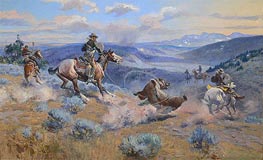
Loops and Swift Horses are Surer than Lead 1916
Oil Painting
$1168
$1168
Canvas Print
$49.98
$49.98
SKU: RCM-16437
Charles Marion Russell
Original Size: unknown
Amon Carter Museum, Texas, USA
Charles Marion Russell
Original Size: unknown
Amon Carter Museum, Texas, USA
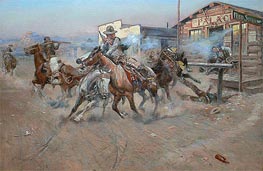
Smoke of a .45 1908
Oil Painting
$1261
$1261
Canvas Print
$49.98
$49.98
SKU: RCM-16438
Charles Marion Russell
Original Size: unknown
Amon Carter Museum, Texas, USA
Charles Marion Russell
Original Size: unknown
Amon Carter Museum, Texas, USA
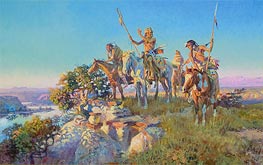
The Fireboat 1918
Oil Painting
$962
$962
Canvas Print
$49.98
$49.98
SKU: RCM-16439
Charles Marion Russell
Original Size: 40.6 x 63.5 cm
Public Collection
Charles Marion Russell
Original Size: 40.6 x 63.5 cm
Public Collection

Indian Hunters' Return 1900
Oil Painting
$1360
$1360
Canvas Print
$51.23
$51.23
SKU: RCM-16440
Charles Marion Russell
Original Size: 61 x 91.4 cm
Public Collection
Charles Marion Russell
Original Size: 61 x 91.4 cm
Public Collection

When I Was A Kid 1905
Paper Art Print
$47.70
$47.70
SKU: RCM-16441
Charles Marion Russell
Original Size: 35.6 x 28 cm
Public Collection
Charles Marion Russell
Original Size: 35.6 x 28 cm
Public Collection
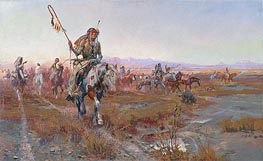
The Medicine Man 1908
Oil Painting
$1278
$1278
Canvas Print
$49.98
$49.98
SKU: RCM-16442
Charles Marion Russell
Original Size: 76.2 x 122.2 cm
Amon Carter Museum, Texas, USA
Charles Marion Russell
Original Size: 76.2 x 122.2 cm
Amon Carter Museum, Texas, USA

In the Wake of the Buffalo Runners 1911
Oil Painting
$1261
$1261
Canvas Print
$62.94
$62.94
SKU: RCM-16443
Charles Marion Russell
Original Size: 64.8 x 90.2 cm
Private Collection
Charles Marion Russell
Original Size: 64.8 x 90.2 cm
Private Collection